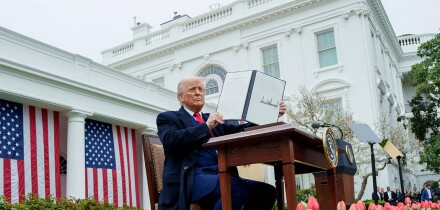Institutional investors increasingly are turning to commodity derivatives for diversificiation. For examplePGGM, the second largest pension fund in the Netherlands, announced it will invest between $1.4-$2.3 billion in the commodity markets this year.
There are two ways institutional investors can gain access to the commodity markets. One is to invest directly in the commodity futures markets, or by arranging a total-return swap with an investment manager that specializes in commodity derivatives. In a typical swap the investor receives the return of a predefined commodity index and pays a LIBOR-based rate on a notional sum.
The economic function of commodity derivatives markets is to facilitate risk sharing and the efficient allocation of resources. Futures (and forward) markets are not forecasting mechanisms. To expect futures prices to only reflect predictions of future prices ignores their primary function. Therefore it is possible to take positions to monetize the bias in futures prices when they reflect more than a forecast of the future spot price.
This article will touch on three examples of systematic commodity strategies, whether the investment is implemented through futures or swaps. The returns on a total-return commodity-index swap are directly related to the returns generated by the underlying commodity futures contracts, which collectively make up the swap's commodity index.
STRUCTURAL IMBALANCE STRATEGY
The first class of trades results from there being a structural imbalance among natural buyers and sellers. When there is a preponderance of natural commercial sellers, the futures price will be biased downward in order to induce speculators to take up the other side of the transaction. This strategy is well documented. In fact, the Goldman Sachs Commodity Index (GSCI) is based on this strategy.
The theory underlying this strategy was first put forward by the economist John Maynard Keynes in 1930. He proposed that commodity futures tend to be priced at a discount to spot prices in order to induce speculators to provide price insurance to commodity inventory holders. Investors in commodity futures essentially earn a risk premium for bearing the volatile commodity price risk that inventory holders and producers wish to lay off.
There are two ways to take advantage of this theory. One way is to passively invest in a long-only commodity futures program, which is either exclusively or heavily weighted in contracts that most strongly exhibit commercial hedging pressure. The second way is to invest only during those times when the commodity futures contracts exhibit short hedging pressure. In the former method, one is constantly invested in a commodity futures program. In the latter method, one would hold no position in a particular commodity futures contract if it did not demonstrably exhibit commercial hedging pressure.
Each method will be discussed below. A fuller discussion of each method can be found on DW's web page (www.derivativesweek.com).
INVESTMENTS IN A PASSIVE
LONG-ONLY COMMODITY PROGRAM
Returns for passive long-only commodity index programs are concentrated in particular commodities. The particular commodity futures contracts which have statistically significant returns are ones whose underlying commodity have difficult storage situations. For these commodities, either storage is impossible, prohibitively expensive, or producers decide it is much cheaper to leave the commodity in the ground than store above ground.
The ability to store the commodity can act as a dampener on price volatility since it provides an additional lever with which to balance supply and demand. For commodities with difficult storage situations, price has to do a lot (or all) of the work of creating equilibrium between supply and demand, leading to volatile spot commodity prices.
Producers and holders of these commodities will therefore be especially motivated to use the commodity futures markets to control or manage uncertain forward price risk. The price pressure resulting from commercial hedging activity causes a commodity's futures price to become biased downward relative to its future expected spot rate.
A 1996 Journal of Futures Markets paper by Robert Kolb effectively verifies these arguments in an empirical study. Kolb examined 45 commodity futures contracts over the timeframe 1969 to 1992 and determined which commodities have statistically significant daily returns using both parametric and non-parametric tests. If a contract did not exist as of 1969, Kolb starts calculating a contract's return series at its inception. Of the non-financial futures contracts, the only commodities which had significant positive returns under both tests were crude oil, gasoline, live cattle, live hogs, soymeal, and copper. To a contract, each of these commodities has a difficult storage situation.
One might expect that the bulk of the GSCI's returns would be due to its weightings in commodities with difficult storage situations. This would be a reasonable expectation since the empirical evidence of returns is strongest for these commodities. The theoretical explanation for returns is also the most compelling for these commodities. And in fact as shown below, a historical decomposition of the GSCI's returns shows that the bulk of its returns are due to its energy, industrial metal and livestock sectors. These three sectors include commodities which are difficult to store. The excluded sectors, the agricultural and precious metals sectors, on the other hand, are negligible to negative return contributors. This is as expected, given that these two sectors represent commodities which generally are not difficult to store.
INVESTMENTS IN COMMODITY FUTURES CONTRACTS ONLY DURING PARTICULAR TIMES
One can implement the theory on commercial hedging pressure by concentrating one's investment in those commodities for which this pressure is most abundant, as discussed above. Or alternatively, one could passively invest in commodity futures contracts not included in the first program, but only during those seasonal times when short hedging pressure is most apparent. Two academic papers referenced in the version of this article on DW's home page effectively confirm this method empirically.
TWO OTHER SYSTEMATIC STRATEGIES
As noted above, one can identify two other systematic commodity strategies besides the structural imbalance strategy. These strategies are the weather-fear premium and structural rigidity strategies. An extended version of this article on DW's web page explain these terms. This explanation includes the economic reason for the systematic returns to these strategies.
This week's Learning Curve was written by Hilary Till, principal at Premia Capital Management inChicago.






